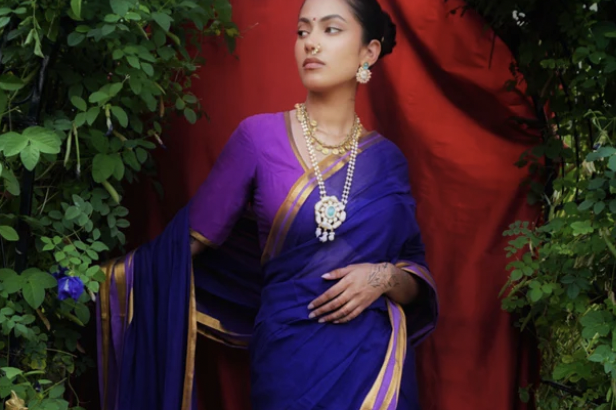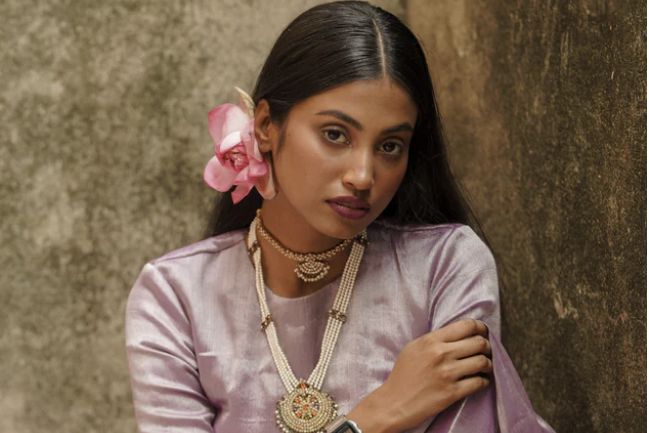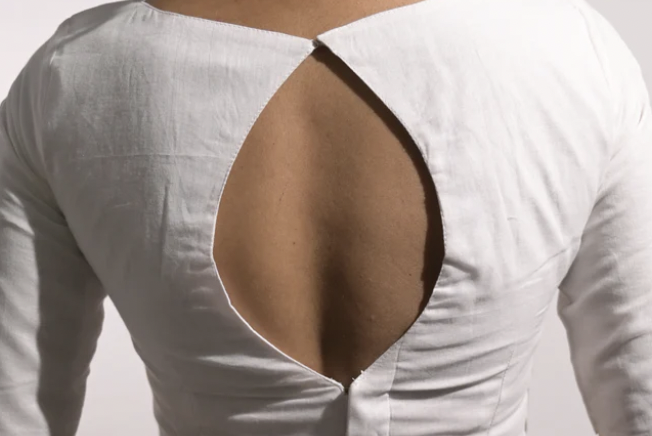
From Traditional to Contemporary: 10 Must-Try Saree Draping Styles
From Traditional to Contemporary: 10 Must-Try Saree Draping Styles
The saree stands as a testament to the evolving artistry and technical ingenuity of Indian dress. With deep historical roots and extensive cultural significance, saree draping has become not only a symbol of Indian identity but also an ongoing field of design exploration. From time-honored methods preserved across generations to newly put-together draping techniques, the saree continues to adapt, providing an impressive spectrum of options for contemporary wearers. We are now going to talk about 10 must-try saree drapes that everyone should try to give a different look to their beautiful sarees
Nivi Style Saree Draping Style
The Nivi drape, which comes from South India, is generally considered to be the ‘classic’ saree draping style. It is distinguished by its precise textile-folding and organizing pallu pattern, which together imparts a sense of surprising structural sharpness and formal elegance to the garment. This look continues to be the gold standard for Sangeet finery — especially when paired with traditional heritage jewellery! Its longevity is a testament to the thoroughness of its planning, and ability to grow and evolve with new generations.
Bengali Style Saree Draping Style

Source: Pinterest
Colour-wise, emerging out of Eastern India, the Bengali drape is marked by a relatively more restrained palate, with loose, unpleated front folds (if any) and a broad pallu that’s draped over both shoulders. This drape not only showcases the saree’s woven borders and detailed motifs but also allows for greater freedom of mobility. The Bengali style is often chosen for events where subtle sophistication and the skill of the textile maker are the focus.
Gujarati Style Saree Draping Style

Source: Pinterest
The traditional Gujarati drape, common among the women of Western India, reverses the pallu direction—instead of draping over the right shoulder and across the chest. This artistic design element allows for maximal display of the saree’s decorative end-piece (Anchal), enhancing the visibility of hand embroidery or print work. Its aesthetic elegance and functional versatility make it the perfect model to go from day-to-night, formal festivities to leisurely social events.
Maharashtrian Nauvari Drape

Source: Pinterest
Best known for its use of a nine-yard saree, the Maharashtrian Nauvari drape uses an elaborate folding style that divides the fabric around the legs, forming a trouser-like appearance. This modern, regionalist approach is praised worldwide for its ergonomic benefits, particularly for dynamic uses, like dance or ritual performance. The Nauvari drape is a beautiful example of how cultural heritage and practical garment engineering can coexist.
Lehenga Style Saree Drape

Source: Pinterest
Modernizing the lehenga silhouette, this style brings together the beauty of saree and skirt, layering material and pleating it to create a beautiful lehenga shape. This approach is commonly preferred for major events because of the dramatic height and volume and the seamless visual continuity it creates. Because of this drape’s potential to maximize surface area display, it is the optimal choice for sarees featuring complex embellishments or stonework.
Butterfly Style Saree Drape

Source: Pinterest
A modern interpretation, the Butterfly drape is made with nearly microscopic pleating and a thin pallu, fanning out dramatically over the shoulder for an eye-catching style that evokes the effect of butterfly wings. This draping technique is great for drawing attention to the saree’s pallu designs and is frequently used in glamorous environments or on television. Its technical demands, like exacting pleating and architectural pinning, call for heavy draping skills.
Belt Style Drape

The Belt drape incorporates an external cinching element, such as a belt or Kamar bandh, to secure the saree at the waist. This method not only highlights the natural waist, adding to a tailored appearance but also reinforces the garment, ideal for long wear on special occasions. The Belt drape stands out for the balance it creates, seamlessly incorporating both classic and futuristic accessory designs.
Mumtaz Style Saree Drape

Source: Pinterest
To achieve this drape inspired by Bollywood’s Golden Age, the Mumtaz drape, the saree is wrapped closely around the body in several concentric layers that result in a contoured, spiral appearance. This style is best suited for lightweight fabrics and is used mostly for the retro vintage look it provides. The surface design of the Mumtaz drape proved technically challenging, as maintaining the same tension while ensuring the layers were repeated without excess bulk was key.
Cape Drape Style

Source: Pinterest
In the Cape drape, the saree pallu is stretched out to create a cape- or shawl-like extension, adding a real upper-body drama. This design is very architecturally and structurally complex, demanding careful pleating and pinning to keep the balance of the cape’s structure yet still be able to wear aesthetically. It’s often used in today’s high fashion runway shows or black-tie events to create that show-stopping look.
Indo-Western Pant Style

Source: Pinterest
The Indo-Western Pant drape combines traditional saree elements with fitted Western bottoms, like trousers or leggings. By adjusting the saree’s pleats and pallu drapery over the lower garment, this technique works to find both comfort and a dramatic, cutting-edge aesthetic. Its use is increasing in popularity, particularly with younger demographics that are looking to integrate cultural authenticity with modern functionality.
In summary, saree draping embodies a dynamic interplay between tradition and innovation, each style reflecting both regional identity and broader trends in textile engineering. As sartorial preferences evolve, these techniques continue to provide a framework for technical creativity and personal expression, ensuring that the saree remains a vital and adaptive form of attire.







